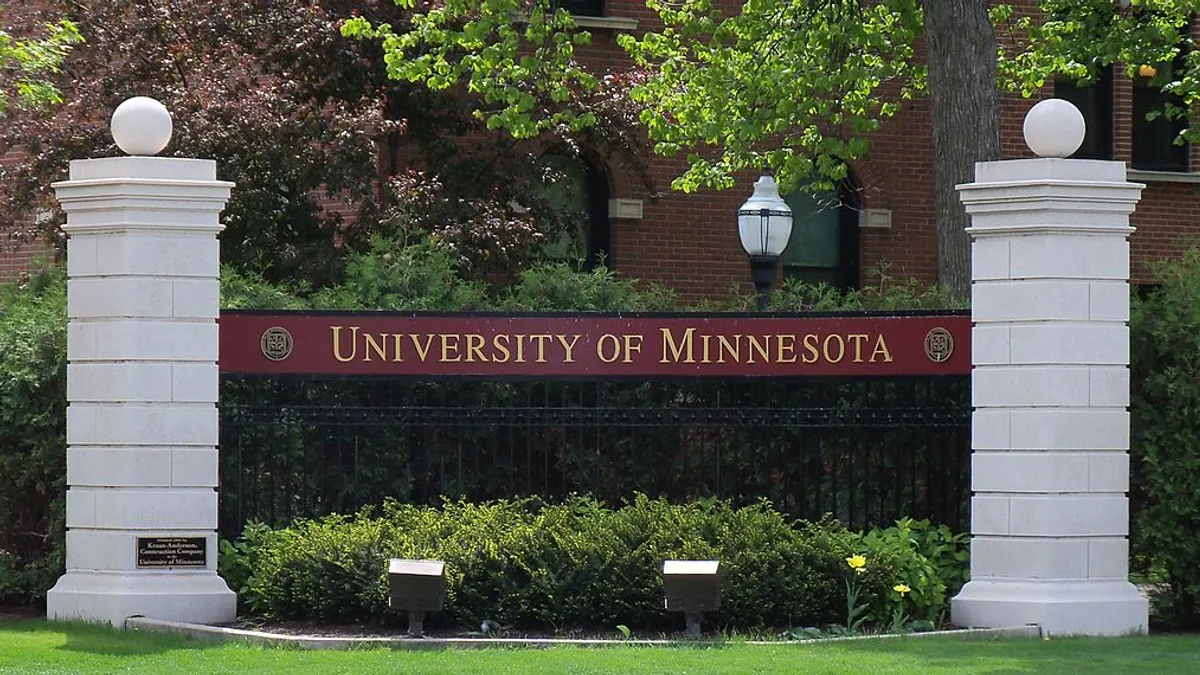Technologies such as artificial intelligence (AI) and virtual reality (VR) are rapidly expanding opportunities for teaching and learning, and they are giving college administrators new and different ways to track student outcomes.
To learn more about the impact of these technologies, we attended a handful of panels on the topic led by higher education and technology leaders at Educause's annual conference in Denver this week. From teaching with VR to tracking student success with AI, we explore how colleges and universities are using new technologies to conduct research, teach students and create smarter campuses.
Learning with virtual and augmented reality
Virtual and augmented reality tools can provide students with experiences that would be otherwise too expensive or even impossible to replicate in the real world, from exploring the inside of a cell to traversing faraway planets, said D. Christopher Brooks, director of research at the Educause Center for Analysis and Research.
At Hamilton College, for example, these tools are changing the way the 1,850-student liberal arts institution teaches human anatomy. Students there can learn about the body via simulations of human organs in virtual reality, said Ben Salzman, an instructional designer for the college. And even though such tools are primarily used to enhance student learning, they can double as cost-cutting measures. In the case of some virtual anatomy courses, dissections can be performed at any time without the need for an expensive cadaver.
Virtual and augmented reality programs can also help learners work on soft skills. At Penn State University, researchers have built an immersive augmented reality program called First Class in which future teachers can engage with simulated students in a virtual classroom setting. And — just like real students — they may get bored or act out, providing teachers the opportunity to practice handling difficult or novel situations, said Kyle Bowen, director of innovation for Teaching and Learning with Technology at Penn State.
"It really takes, in many ways, a village to get a 3D project off the ground."

D. Christopher Brooks
Director of research, Educause Center for Analysis and Research
Launching 3D programs on campus can be a lengthy process, Brooks said, and colleges should be aware it may take significant manpower and time before they see the benefits.
"It takes time to get your software up and running, learning the technology, understanding how to work it, how to program it, and then it also takes time to redesign courses and assignments," he said. "It really takes, in many ways, a village to get a 3D project off the ground."
Brooks recommends creating support systems in advance for 3D projects so they can be scaled as adoption grows. To gin up enthusiasm for VR after a heavy investment, he suggests keeping the technology in accessible spaces for faculty and students to use.
AI's growing role in the classroom
AI has become a bit of a buzzword, and the hype surrounding it has created divisions in higher education. Some believe AI will become a critical tool in improving student outcomes, while others believe it may result in formulaic teaching and put learners' privacy at risk.
Breaking through faculty resistance to AI involves helping them understand that it will not replace their core responsibilities but instead "supplement the work we already do," said Jennifer Sparrow, senior director for Teaching and Learning with Technology at Penn State.
The university has developed a number of prototypes that implement AI for uses such as helping create courses, assembling textbooks from open-source materials and automating quiz and test production. These tools aren't meant to be a finished product but rather create a starting point that faculty can tailor to their needs, Bowen said.
Looking to the future, faculty may be able to gather data about how much class time was spent on a certain topic via data gathered from audio recordings, much in the way Fitbit users can now dissect stats from their runs, Bowen added.
"This is about [giving] the faculty access to the tools that will allow them to be more creative, more engaging, have more conversations and ultimately be more human," Sparrow said.
"As soon as we open [AI] up and let it be free rein ... without an understanding of what we're doing or trying to do, we should be wary."

Teddy Benson
Director of data integration, Walt Disney World
Colleges are using AI tools outside of the classroom as well. Saint Louis University and Arizona State University, for example, have installed Amazon's voice-enabled assistant Alexa in dorm rooms and are planning to expand its use to other areas of campus.
Proponents of voice-enabled technology hope it can be developed to deepen student engagement, improve retention rates and create smarter classrooms, though for now it's mostly a tool students can use for features such as playing music, looking up a definition and setting an alarm.
"This is still a little bit of a novelty," said John Rome, deputy chief information officer at Arizona State University. "As the technology matures, I think in two or three years we're going to be doing things that we haven't even imagined today."
Using AI responsibly
AI is not without its pitfalls, as some panelists noted, and higher education leaders should be careful about how they use it.
Without proper caution, bias can creep into AI technology. Google, for example, has come under fire for some racist and sexist autofill search suggestions, and Microsoft's teenage chatbot Tay was shut down after it mirrored hate-filled speech from trolls on Twitter.
Such risks can stem from a number of factors including AI pulling from incomplete or one-sided data or learning through bad interactions. To try to avoid these biases, it's important to consider the environment where the AI model will be and to design it to ignore undesired interactions, said Teddy Benson, the director of data integration at Walt Disney World.
"You need to make sure that your environment matches your goals, your data set, your expected results," Benson said. "[AI engines] are in a sense infant virtual babies you need to take care of."
Benson noted how confusing some of the conflicting messages surrounding AI technology can be, with some lauding it as an important tool while others worrying about it's unintended effects.
"As long as we are careful, as long as we encapsulate or control the environment that we wish it to be within, we should be fine," Benson said. "As soon as we open it up and let it be free rein ... without an understanding of what we're doing or trying to do, we should be wary."

















